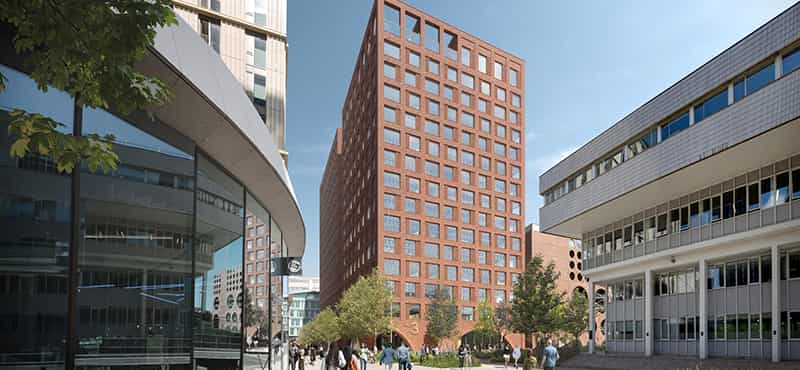Prime office rents across the UK’s major regional cities have risen by 5.5% year-on-year, with limited availability continuing to shape occupier activity. The latest figures show a total take-up of 1.7 million sq ft across the “Big Nine” office markets in the third quarter, surpassing the previous quarter but still falling below the ten-year average.
City-centre offices with strong transport links and modern amenities remain in high demand, accounting for two-thirds of total activity. Businesses continue to prioritise energy-efficient, high-specification spaces, which has driven rental growth in Birmingham, Bristol, Cardiff, and Leeds. The average prime rent now sits at £40.72 per sq ft, up 2.1% from the previous quarter.
The shortfall in Grade A office space remains a defining feature of the market. Vacancy levels have fallen to 10%, with only 694,000 sq ft of new prime stock expected to complete in 2026. This pipeline is well below the 2.2 million sq ft annual average delivered between 2020 and 2024, heightening concerns over future supply constraints.
Among the regional markets, Liverpool recorded its strongest quarter since 2022, with take-up reaching 146,000 sq ft, up 166% from the previous quarter. Leeds saw activity rebound 67%, returning to its long-term average, led by professional services demand and new lettings at Keelstone in Aire Park. The city also reported the sharpest rental rise across the Big Nine, with prime rents climbing 8.2% to £46 per sq ft.
Birmingham maintained a resilient position with 207,000 sq ft of take-up, its best quarter of the year, supported by the expansion of the Birmingham Health Innovation Campus. Bristol remained one of the strongest regional markets despite a modest quarterly dip in demand, as total take-up reached 249,000 sq ft. The city continues to command the highest rents in the Big Nine, up 2% to £50 per sq ft, reflecting ongoing competition for sustainable, centrally located workspace.
The latest data points to a regional office market driven by quality and sustainability rather than volume. With limited new developments on the horizon and occupiers willing to pay premium rents for high-performing buildings, competition for prime space across the UK’s major regional cities is set to intensify in the coming year.



